Baby got BACK! Or at least your horse should! Getting your horse’s back in shape is the key to unlocking loads of potential in your mount. But it’s far from fast or easy to do and like everything else horse-related, it requires a lot of understanding, time, patience and practice.
So let’s take a look at what a horse’s topline is, how you can evaluate it, and some exercises you can do on the ground or under saddle to help strengthen your horse’s back and build topline.
What is a Horse’s Topline?
When we’re referring to a horse’s topline, we’re talking about the back muscles lining either side of the spine from neck to tail. Take a look at the diagram below.
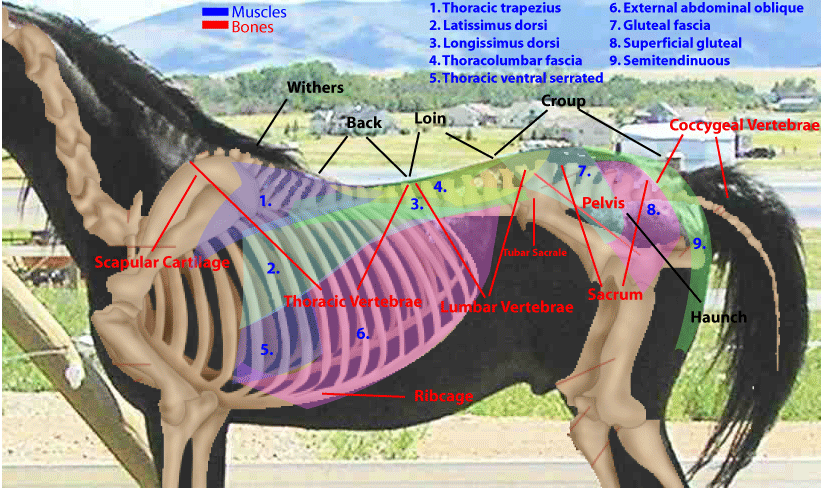
From a horse’s withers to their croup, the topline is made up of the (1) thoracic trapezius, (2) the latissimus dorsi, and (3) the longissimus dorsi. Developing these muscles will help your horse carry him or herself in a more relaxed, collected, long and low position, and most definitely improve your show scores.
Much like proper posture, teaching your horse to engage these back muscles and lift their shoulders will put you and your horse in the best position to ride for years to come, while those who skip this step and ride their horse with a hollowed/dipped back (more explanation later) will most likely create physical problems (sway back, kissing spine, to name a few) for the horse in the future.
Still a little confused about what we’re talking about? Take a look at this short video from Evention TV that reviews all of this.
To help everyone understand these concepts a little better let’s take a look at these diagrams that were part of a longer rant about this subject on Imgur.
First let’s look at what you don’t want: a horse with it’s head held high, forcing the spine to curve downward creating a “hollow back” and leaving room for potential pressure points due to poor saddle fit or lack of musculature. In this diagram you’ll see the high head forces the horse’s spine to dip while the majority of weight would be carried on their inside front leg.
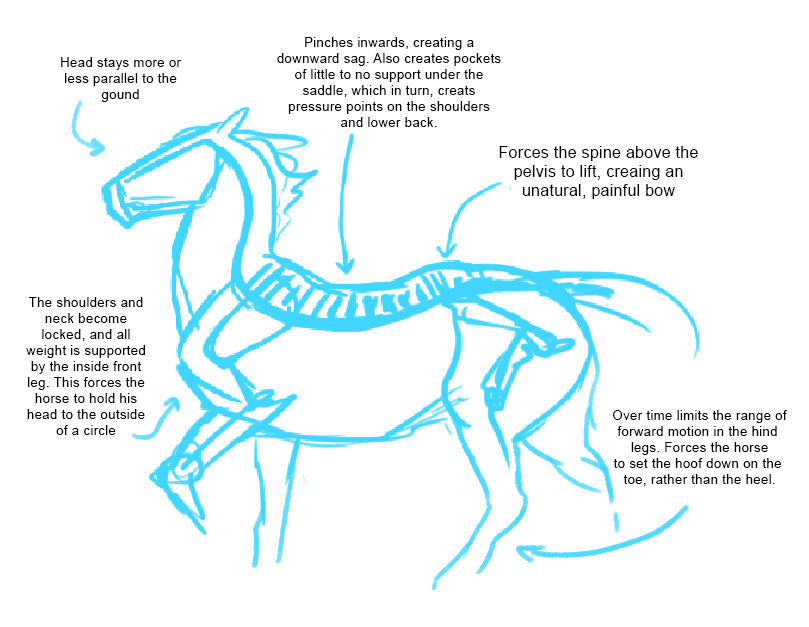
Now let’s compare that posture to one where the horse’s head is long and low with the spine elongated and back engaged so the weight is being carried on the horse’s inside hind leg.
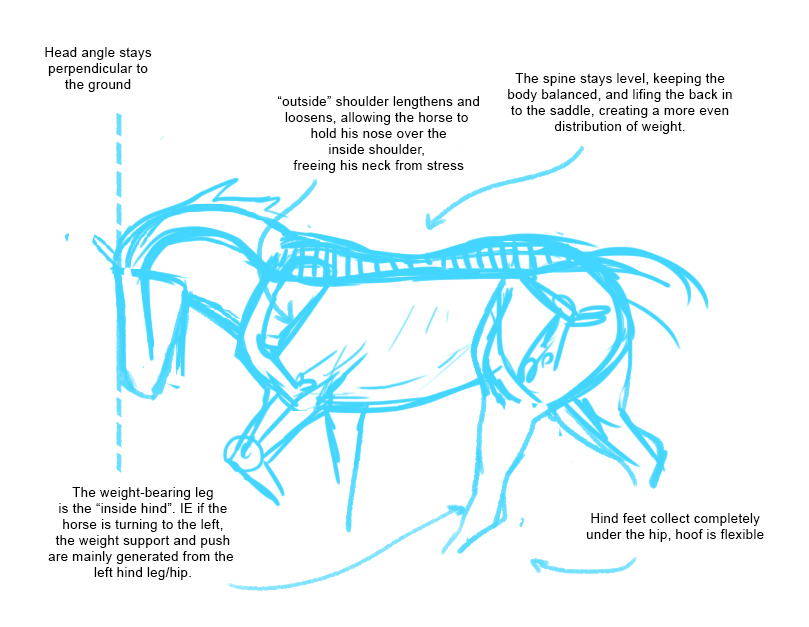
Here you’ll see the horse’s head is down, keeping the spine parallel to the ground and allowing the horse to engage those back muscles.

The same is true for the horse above. The head is lowered, spine lifted to form a bridge beneath the rider with the horse’s hind legs extending all the way underneath their hip.
Topline & Nutrition
In addition to exercise, nutrition plays a critical factor in building a horse’s topline. Just like any other athlete, a horse’s muscles require ample protein and key amino acids to get stronger. There are 10 key amino acids that a horse requires including: lysine, threonine, methionine, valine, leucine, isoleucine, phenylalanine, tryptophan, arginine and histidine. The need for these amino acids varies with age and the level or work and fitness of each individual horse, but each acid plays a unique roll in aiding growth and muscle development at all ages.
This SmartPak Ask the Vet video below discusses the subject of toplines and nutrition in a bit more detail.
Most horse feeds contain a mixture of crude protein, crude fats, crude fiber and a handful of other vitamins and minerals. This crude protein is the percentage containing essential muscle-building amino acids. Grass hays such as timothy and orchard grass often contain less protein when compared to alfalfa so depending on the quality of hay and grain being fed, you may consider a supplement that bumps up the levels of those amino acids if your horse is in a high level of work or needs some serious help in the right direction.
Evaluating a Horse’s Topline
To evaluate a horse’s topline you’re going to want to look at few things, namely, you guessed it, their back! Using the topline grading system developed by Progressive Nutrition is also a good place to start keeping track. This system grades horse’s on an A to D scale with A being the best.
- Grade A—The ideal topline. The back, loin and croup are full and well rounded. The spinal column can’t be seem. The topline muscles are well developed and blend smoothly into his ribs. Croup, hip and stifle muscles are well defined.
- Grade B—The topline is sunken in the back area between the vertebrae, and concave at the top of the ribs. Sides of the withers may be convase, as is the back between vertebrae. Croup and hip muscling is adequate, pelvis to the point of the hip is rounded.
- Grade C—The topline is sunken in both the back and loin areas. Withers, between vertebrae, and ribs are concave. The spinal column is higher than the muscles and can easily be seen. Muscles over the hindquarters are developed and rounded.
- Grade D—The topline is sunken in the back, loins, and croup. Withers. loin and croup are concave. Croup appears pointed at the top with the vertebrae and hip bones higher than the concave muscles between them.
Take a look at this wonderful internet pony apparently named Zig Zag. In the top before photo you can see the curvature of the dipped spine and a little bit of rib showing. In the bottom after shot you can see that the spine is much more level, less of his ribs are showing, and the muscles are much more developed.
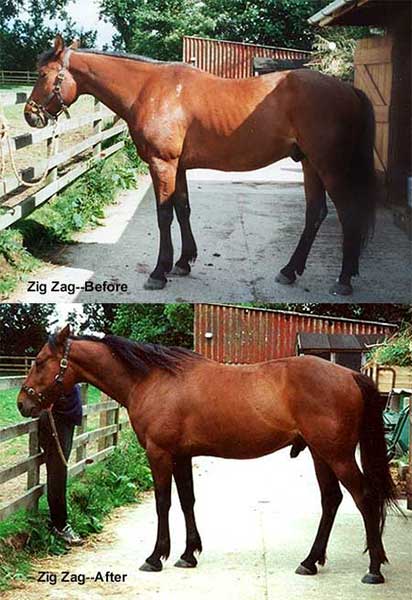
One other important thing to note when you’re assessing the condition of your horse’s topline is that atrophy of topline muscles begins in the withers, then continues to the back and gradually extends through the loins and croup and down into the hip and stifle. Rebuilding muscle occurs in the reverse order meaning that to see progress in the withers you’ll probably need to put in a month or more of stretching, exercising, and conditioning.
Exercises & Stretches to Build Topline
The point of these exercises and stretches is to strengthen and build the muscles in your horse’s back. Eventually you should work up to maintaining this position under saddle with the horse elongating it’s neck and back, lifting their shoulders, engaging their back and holding their head long and low.
Back Stretches
The first thing you should start with are some basic stretches and ground exercises. These stretches and exercises help gradually improve flexibility and strength over time and they can easily be done using a little treat before or after a ride. Check out this video from Dr. Emma Poole reviewing how to do some of these stretches.
This stretch is a great tool to use regardless of what stage you might be at with your horse. It’s how I start and end most of the work I do with my horse.
Hill Work
Another basic ground exercises you can do to improve your horse’s back strength is practice leading your horse backwards up a hill. It only needs to be a slight incline to be effective and you can always increase the size of the hill as you continue.
You can see in the video above that even though the hill is very slight, it’s all about the repetition of work for the horse that encourages them to use the proper back and butt muscles.
Cavalettis / Ground Poles
Cavalettis, ground poles, or cross rails are also great ways of encouraging your horse to look down and know where their feet are moving. By creating patterns with ground poles, most horses will naturally figure out to hold themselves in a long and low position because it’s just more comfortable than running around with their head up in the air so they can’t see what’s on the ground in front of them.
In the video below, the trainer makes a half boxed pattern and practices lunging her horse over the poles while using a pessoa system that helps teach the horse to keep their head long and low with their back engaged.
This is a great first step especially for young or untrained horses, but if your horse struggles to figure it out on their own you might need to adjust your strategy.
Transitions Under Saddle
Any kind of transition — walk to trot, trot to walk, trot to canter, canter to trot, walk to canter, canter to walk — requires that the horse use all of these back and butt muscles that we’ve been talking about. Which means one thing: transitions are an easy way to isolate this practice under saddle. This video demonstrates practicing a trot-canter-trot transition sequence as a way for dressage students to warm up (even though it could absolutely apply to everyone!).
Focusing on patterns that incorporate straight lines and lots and lots of transitions is one of the best ways to build back strength under saddle.
Liberty Work & Free Lunging
I’ve been doing a lot of these exercises with my OTTB Sure Prize and at some point between ground work and work under saddle, he started to have a bit of a rebellion in terms of how he wanted to carry himself versus the long and low, relaxed ride I was looking for. I’d done all of these stretches and exercises over poles, both lunging and under saddle, but it just wasn’t coming together under saddle.
If this happens to you it means one thing: stop and take stock of things. How’s your saddle fit? How’s your horse’s feed? If you can make sure you’re good on those fronts then the answer is to go back to basics. In my case, it probably wasn’t coming together as quickly as I wanted because his back muscles weren’t fully built up, making it more difficult for him to carry the weight of both of us.
So rather than make mechanical adjustments to my tack, like adding a tie down or going back to lunging with a pessoa system (which are all perfectly fine adjustments if you’ve started work and hit a wall), I gave it one final Hail Mary in the form of free lunging. Surely if my boy was ever going to figure out how to move more comfortably, the way to do it would be with absolutely no strings attached.
Turns out this theory was pretty accurate and by allowing him to move freely rather than in tight circles lunging around me, he started to figure it out. I started to reward the times he’d stretch out and lift his back, letting him walk or stand as a reward. After nearly a month of this practice we’ve gotten to a point where we can continue working on the same thing under saddle. You can check out our progress in the little video above, which will soon need to be updated because we’re going on 1 year together in August!
The process of getting your horse to move in a long and low, relaxed, collected manor is just that: a process. Don’t be discouraged and if all else fails, have faith and go back to basics!
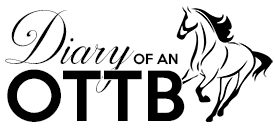
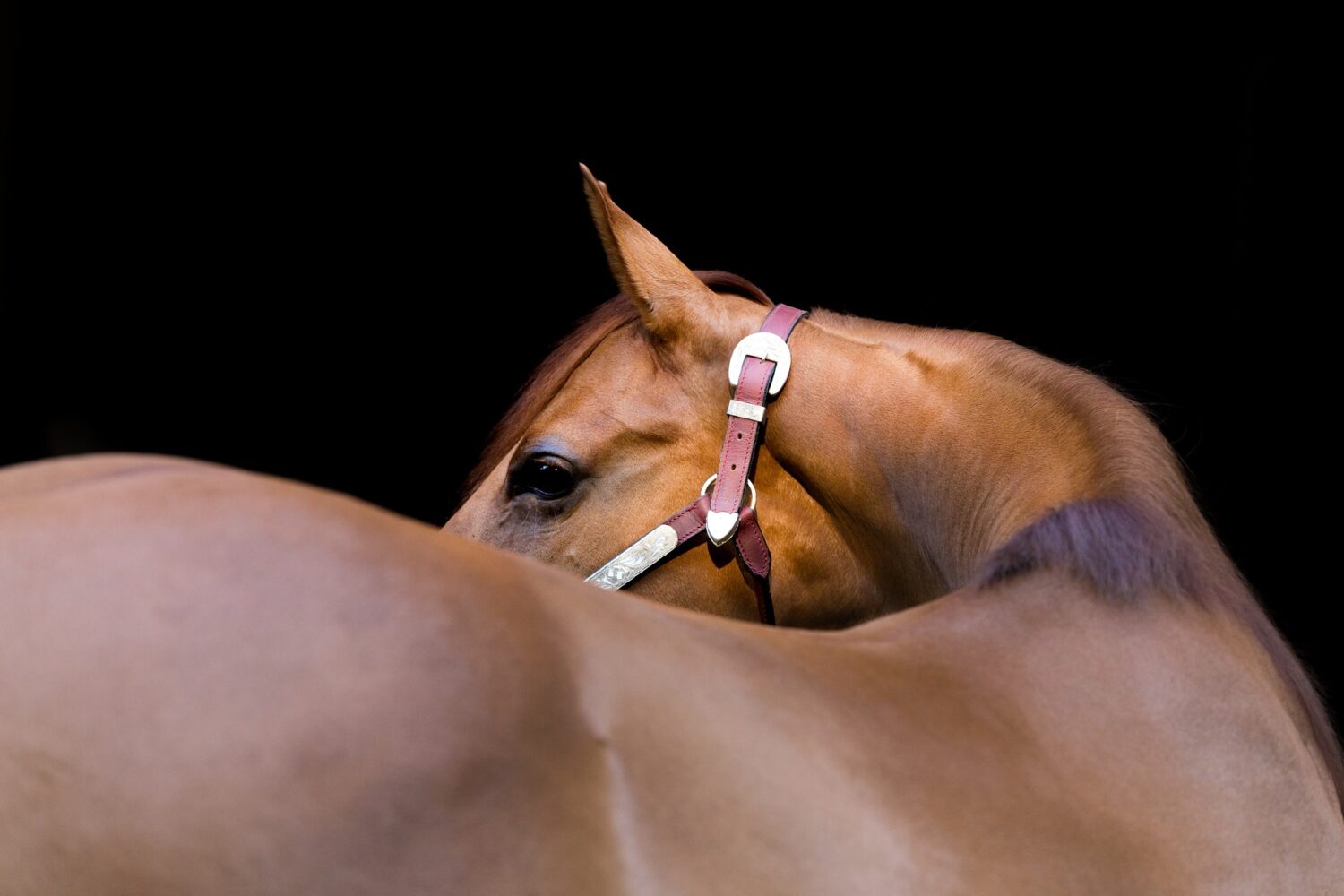
Very informative great article ???